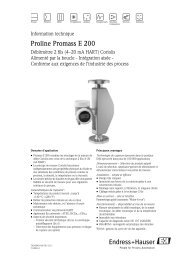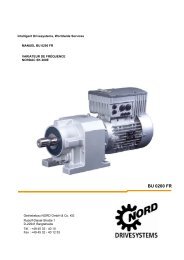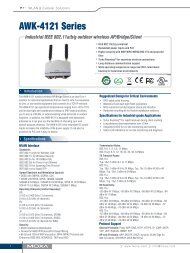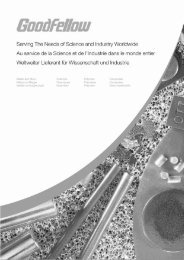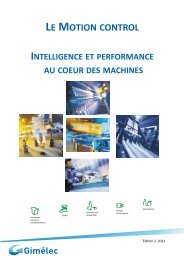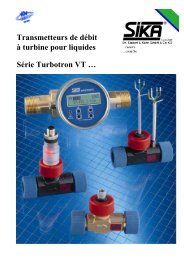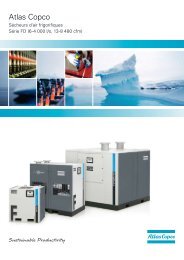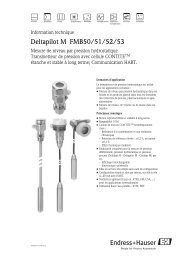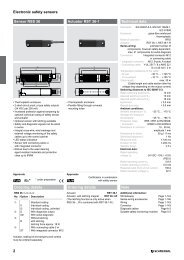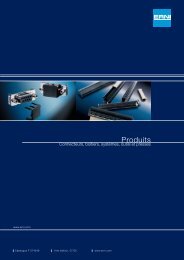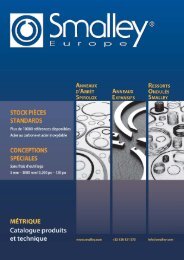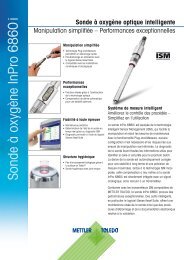Flexible Heaters Design Guide - BiS Sistem
Flexible Heaters Design Guide - BiS Sistem
Flexible Heaters Design Guide - BiS Sistem
You also want an ePaper? Increase the reach of your titles
YUMPU automatically turns print PDFs into web optimized ePapers that Google loves.
Custom <strong>Design</strong> Options<br />
Heater designs to perfectly fit your application<br />
Thermofoil heaters give you design options that other heater<br />
types can’t match. Minco’s custom design options can be<br />
quantified into three sections.<br />
Element design:<br />
Element patterns, outline shapes, heat profiles and<br />
terminations can be fine-tuned to create the exact thermal<br />
and physical component to fit your unique requirements.<br />
Get more information below.<br />
Integrated components:<br />
Integrating temperature sensors directly into the Thermofoil<br />
heater improves your thermal control while at the same time<br />
simplifying the end-use assembly operation.<br />
Get more information on page 12.<br />
Value-added services:<br />
Complete thermal sub-assembly can provide a turnkey<br />
solution for your application. This could entail factory<br />
mounting of heaters to fabricated heat sinks, SMT control<br />
electronics to the Thermofoil heaters, incorporated rigid<br />
multi-layer flex circuits and connector termination.<br />
Get more information on page 13.<br />
Heater outline shapes<br />
With a 3-dimensional approach the possibilities are endless.<br />
Select the proper Thermofoil heater insulation to meet your<br />
electrical and thermal performance requirements while at the<br />
same time satisfying your demanding packaging needs. Using<br />
selective adhesive backing configurations will also promote<br />
ease of installation of our heaters within smaller and smaller<br />
device spaces. Minco also has tooling and lasering capabilities<br />
which allows us to provide complex part outlines (holes, cutouts,<br />
radii) with very tight dimensional tolerances.<br />
Minco puts the heat where<br />
you need it, no matter how<br />
complex the shape<br />
Low profile flex circuit eliminates<br />
leadwires, simplifying assembly<br />
Exposed foil pads for use with zero<br />
insertion force (ZIF) connectors<br />
Integrated SMT flex circuit<br />
offers convenient onboard<br />
control circuitry<br />
Profiled heater conductor routing<br />
A profiled element levels out temperature gradients by providing<br />
extra heat where losses occur, such as along edges or<br />
around mounting holes. In a typical case, profiling might<br />
reduce a ±25°C temperature variation across a surface to ±5°C<br />
or better. Once the best profile is determined for the application,<br />
Minco’s photo-etching process ensures repeatability from<br />
heater to heater.<br />
Methods to derive the profiling pattern include:<br />
• Experimentation: Lay out a pattern with standard heaters<br />
and vary the power levels until temperature reaches the<br />
desired uniformity. Or, Minco can provide a custom heater<br />
with separately powered zones for prototyping. Minco will<br />
then reproduce the successful profile with a single element.<br />
• Finite Element Analysis (FEA): Although more expensive, FEA<br />
modeling of thermal systems can reduce the number of trials<br />
required to design a profiled heater. It may help to map the<br />
temperature resulting from uniform heat input (using a<br />
standard heater), then work backward in FEA to derive the<br />
profiled pattern.<br />
Tight uniformity goals may require more than one profiling<br />
iteration, and a given solution is optimized for only one setpoint<br />
temperature.<br />
Other heater element options<br />
• Dual element for redundancy and/or warm-up and<br />
maintenance heating schemes<br />
• Non-magnetic alloys for inductance canceling<br />
• Dual layer constructions in order to provide higher resistance<br />
(ohms) in small areas or for added inductance canceling in<br />
element patterns<br />
Electrical termination<br />
Leadwires<br />
(standard)<br />
Solder pads<br />
Connectors<br />
Flex circuits<br />
Welded leadwires make a strong, reliable<br />
connection. Options include different colors,<br />
sizes, and insulating materials.<br />
Lowest cost, but limits foil/resistance options.<br />
Insulation displacement connectors crimped<br />
onto etched leads make an economical design.<br />
Other connector types are available such as pin<br />
headers, SMT and ZIF termination.<br />
Minco can supply flex circuits integrally<br />
connected with heaters.<br />
LEADWIRES<br />
SOLDER PADS<br />
CONNECTORS<br />
FLEX CIRCUITS<br />
Introduction<br />
<strong>Design</strong><br />
<strong>Guide</strong><br />
Polyimide<br />
<strong>Heaters</strong><br />
Silicone<br />
Rubber<br />
<strong>Heaters</strong> (foil)<br />
Standard<br />
Polyimide<br />
& Rubber<br />
Rubber<br />
<strong>Heaters</strong><br />
(wire-wound)<br />
Mica <strong>Heaters</strong><br />
Thermal-Clear<br />
<strong>Heaters</strong><br />
All-Polyimide<br />
<strong>Heaters</strong><br />
Sensors,<br />
Controllers &<br />
Accessories<br />
Reference<br />
| <strong>Flexible</strong> <strong>Heaters</strong> <strong>Design</strong> <strong>Guide</strong> | www.minco.com<br />
11





